バックカントリーでスキーをする際、コミュニケーションは命綱です。雪崩やはぐれなどのほとんどの事故は、グループが明確に話し合わず、共に意思決定をしなかったことが原因です。ポイントはこうです:
- 90%の雪崩は被害者またはそのグループによって引き起こされます。
- グループの調整不足はしばしば危険な地形選択や迷子になる原因となります。
- 明確なコミュニケーションがなければ、悪天候や疲労のような小さな問題が命に関わる状況に発展することがあります。
解決策は?事前に計画を立て、役割を割り当て、無線や視覚信号などのツールを使うことです。 Snowfeet* WALKSKI スキーのようなギアはグループが一緒に行動しやすくし、安全を保つのに役立ちます。しかし、ツールだけでは不十分です。誰もが安心して意見を言い、懸念を共有できるシステムが必要です。
要するに、強力なコミュニケーションとチームワークが命を救います。 一歩ずつ分解してみましょう。
バックカントリーグループの安全を確保するコミュニケーションプロトコルとは? - Ask A Ski Bum
バックカントリーグループ冒険での一般的なリスク
バックカントリーは予測不可能です。穏やかな朝が午後には危険な状況に変わることもあります。雪の安定性、積雪深、風のパターンは常に変化し、経験豊富な冒険者でも挑戦的な動的環境を作り出します。明確なコミュニケーションがなければ、これらの変化する条件は小さなリスクを深刻で命に関わる状況に変えてしまいます。
バックカントリー事故の大きな要因は「人間の要素」です。最も準備が整った個人でも、グループのダイナミクスの影響下で誤った判断を下すことがあります。社会的圧力はしばしば懸念を表明することを妨げ、リスクの高い決定につながります。研究によると、スキーヤーやスノーボーダーはグループの調和を乱さないために、より危険なコースを選ぶことが頻繁にあります。このグループの承認を個人の安全より優先する傾向が、災害の原因となります。
雪崩リスクと誤った地形選択
雪崩はバックカントリースキーで最も致命的な脅威であり、その数字は驚くべきものです。雪崩事故の80%以上は、被害者のグループまたは被害者自身によって引き起こされています。これらは自然の偶発的な出来事ではなく、グループの意思決定やコミュニケーションの崩壊によって引き起こされる防げる悲劇です。
雪崩が最も発生しやすい地形は、多くの場合、スキーヤーやスノーボーダーが最も魅力を感じる地形と同じです。35度から45度の斜面は、スリリングな滑走に最適な急斜面であると同時に、最も雪崩が起こりやすい場所でもあります。グループが地形の選択について効果的にコミュニケーションを取らないと、知らず知らずのうちにこれらの危険なエリアに足を踏み入れてしまうリスクがあります。
最も致命的なタイプであるドライスラブ雪崩は、ほぼすべての雪崩死亡事故の原因です。これらの雪崩は驚くほど速く、60〜80マイル毎時で斜面を駆け下り、破断からわずか5秒で最高速度に達します。反応する時間がなく、強力なコミュニケーションによる予防が絶対に必要です。
雪崩に巻き込まれた場合の結果は壊滅的です。被害者の約25%は、滑落中に木や岩にぶつかって受けた外傷で死亡します。初期の衝撃を生き延びた人にとっては、時間が重要な要素となります。雪崩のがれきに埋もれたほとんどの人は二酸化炭素中毒で命を落とし、生存率はわずか15分後に急激に低下します。
不適切な地形選択は、多くの場合グループ内でのリスク認識の共有不足に起因します。バックカントリースキーの従来の装備、例えば長いスキーや重いブーツは、グループが近くに留まりリアルタイムで地形の選択肢を話し合うことを難しくします。これにより、軽率で情報不足の判断が下されることがあります。雪崩以外にも、こうしたグループの結束の欠如はメンバーの分離を招き、危険をさらに高めます。
グループの分離と迷子
不適切な地形選択が雪崩を引き起こすことがありますが、グループから分離することは状況をさらに悪化させる可能性があります。バックカントリーでは、分離が小さな不便を生存の危機に変えることがあります。密集した森林、突然のホワイトアウト、複雑な地形は、最も経験豊富な冒険者でさえも混乱させます。明確な手順や信頼できる通信手段がなければ、グループメンバーは孤立し、戻るための資源や知識を欠くことが多いのです。
バックカントリーでは天候が劇的に変わることがあります。晴れていた日が急にホワイトアウトに変わり、視界が数フィートにまで落ちることもあります。こうした状況では、分離したグループメンバーを見つけることはほぼ不可能です。適切な計画とコミュニケーションがなければ、一時的な分離が永続的なものになりかねません。
長いスキーやかさばる装備などの従来のバックカントリーギアは、狭いまたは技術的な地形のナビゲートをさらに難しくします。これによりグループが広がりやすくなり、誤解が増え、緊急時に迅速に対応する能力が低下します。
分離のリスクは単に迷子になることだけにとどまりません。極端な気温は低体温症や凍傷を引き起こす可能性があり、特に分離したメンバーが一晩を生き延びるための装備を持っていない場合は危険です。これらの危険を避けるためには迅速な再会が重要です。
分離による心理的負担も深刻な問題です。見知らぬ地形で一人であることに気づくと、パニックや誤った判断を招くことがあります。グループの集合知やサポートがなければ、個人は状況を悪化させる絶望的な行動を取るかもしれません。これらの事態を避けるためには、一緒に行動し、明確なコミュニケーションを維持することが不可欠です。
グループの安全を守るコミュニケーション戦略
良いコミュニケーションはバックカントリーでのグループの安全の基盤です。出発前の明確な計画と役割分担から始まります。最高のグループは、物事がうまくいかない時でも機能するシステムを作り、潜在的な混乱を管理可能な課題に変え、全員が何をすべきかを知っています。
事前計画と役割分担
バックカントリーでの安全は、トレイルに出るずっと前から始まります。徹底した準備と明確な役割分担が鍵です。すべてのグループメンバーは緊急時ではなく事前に自分の責任を知っているべきです。
まず目的地を調査しましょう。地形図を使ってランドマーク、脱出ルート、潜在的な危険を見つけます。詳細を掘り下げてください:地形はどんな感じ?水源はどこ?最悪の天候は?これらを知ることで予期せぬ事態に備えられます。
役割を割り当てることで秩序が保たれます。ペースを設定し決定を下すリードハイカーを指名し、遅れた人を見守るスイープハイカーが後ろに付きます。この体制によりグループは一定のペースで進み、誰も置き去りにされません。
よくあるシナリオに備えましょう。例えば、「迷子ハイカープロトコル」を設定し、離れた人はすぐに最寄りの木のそばに座ってさらに迷わないようにします。このようなシンプルなルールがパニックを防ぎ、状況をコントロールしやすくします。
「誰もあなたに知らせずにグループを離れてはいけないことを明確にしてください。理由が何であれ、グループのすべてのハイカーはリーダーであるあなたに離れることを伝えなければなりません。」 - Casey Fiedler、アウトドアアドベンチャープロフェッショナル
事前にコミュニケーションの期待値を設定しましょう。緊急時の計画を共有し、出発前にグループで旅行の目標に合意してください。体力差によるフラストレーションを避けるためにペースについて話し合いましょう。
グループ外の誰かにも必ず連絡を入れてください。少なくとも二人の信頼できる連絡先に、ルート、出発・到着時間、必要に応じて助けを求める方法を伝えましょう。
役割と計画が決まったら、全員がつながり続けるための道具に集中しましょう。
コミュニケーションツール:無線、信号、そして明確な言葉
双方向無線はバックカントリーでの通信に革命をもたらします。携帯電話の電波が届かない場所でも数マイルにわたって信頼できる通信を提供します。特に悪天候や視界が制限される険しい地形で役立ちます。
無線が使えない場合(またはバッテリーが切れた場合)、視覚信号が役立ちます。「止まれ」「危険」「再集合」「安全」のような重要なメッセージに対する手信号を事前に決めておきましょう。明るく反射する服装も、視界が悪い状況での視認性を保つのに役立ちます。
どのようにコミュニケーションを取るかは、使う道具と同じくらい重要です。オープンエンドの質問は、直接的な指示より効果的なことがあります。例えば、「あなたは速すぎます」と言う代わりに、「一緒にいるためにペースを落としましょうか?」と尋ねてみてください。これにより議論が促され、防御的な態度を避けられます。
危険について話すときは正確な言葉を使いましょう。リスクを感じたら具体的に伝えてください。「あの斜面に風で積もった雪がある」と言う方が、「あそこは怪しい」と言うよりずっと明確です。具体的なコミュニケーションはグループ全体でリスクを評価する助けになります。
移動中は定期的にチェックインの時間を設けましょう。30分ごと、重要な地形の変化時、視界が変わった時など、これらのチェックインは小さな問題を大きくなる前に発見するのに役立ちます。
これらのツールと戦略が、旅の間に連絡を保つための基盤を築きます。
移動中の連絡維持
しっかりとした事前計画とコミュニケーションのルールがあっても、移動中に連絡を取り続けるには努力が必要です。グループは自然に広がりますが、連絡を取り続けることが安全のために非常に重要です。
グループを視界内に保ち、最も遅いメンバーに合わせてペースを調整しましょう。先頭のハイカーは常にグループと視覚または声で連絡が取れる位置にいるべきです。視界が制限される場所では、前後間でメッセージを中継できる中間地点を設けましょう。
リーダーは「誰かペースを落としてほしい人はいますか?」といった質問をすることで、問題が大きくなる前に気軽に懸念を共有できる雰囲気を作り出せます。
地形に合わせてコミュニケーション方法を調整しましょう。密集した森の中では、より近くに寄り添い声での連絡を頼りにします。開けた斜面では視覚的な合図が効果的ですが、天候に注意してください。視界が急速に悪化することがあります。技術的な地形では、ルート選択や危険について常にコミュニケーションを取り続けることが不可欠です。
定期的に休憩を取り、再集合し、装備を確認し、今後の予定を話し合いましょう。リアルタイムで観察を共有し、全員が同じ情報を持つようにします。誰かが雪の状態の変化、天候の変動、潜在的な危険を察知した場合、その情報はすぐにグループ全体に伝わるべきです。
緊急時には迅速かつ連携の取れた行動が求められます。誰かが怪我をしたり離れてしまった場合、グループはすでに計画を把握しているべきです。事前に設定された合図や手順により長い話し合いを省き、貴重な時間を節約します。これらの戦略はSnowfeet*ギアと組み合わせることで、移動やコミュニケーションを円滑にし、安全性とグループの結束力を高めることができます。
sbb-itb-17ade95
どのようにSnowfeet*製品がグループの安全を向上させるか

バックカントリーで安全を保つためには、適切なギア選びが非常に重要です。従来の装備はかさばりやすく、特にグループが素早く再集合する必要がある場合には動きを遅くしてしまいます。一方、Snowfeet*製品はバックカントリーでの移動をよりスムーズで連携の取れたものにするよう設計されています。これにより、全員が一緒に行動し、より効果的にコミュニケーションを取ることができ、グループの安全確保に欠かせない要素となります。
Snowfeet* vs. 伝統的なスキーとスノーボード
予測できない地形に出るとき、適切なギアがすべての違いを生みます。Snowfeet*製品は従来のスキーやスノーボードに比べて明確な利点を提供します:
| 側面 | 従来の装備 | Snowfeet* 製品 |
|---|---|---|
| 携帯性 | かさばり持ち運びが大変 | 軽量でバックパックに収まる |
| 使いやすさ | 多くの練習が必要 | 初心者でも簡単に習得可能 |
| グループの機動性 | 遅い切り替えと再集合 | より速い移動と切り替え |
| 地形適応性 | 特定の条件に限定される | 斜面、トレイル、パウダーを楽にこなす |
これらの違いはゲームチェンジャーです。従来のスキーは習得に時間がかかることが多いですが、Snowfeet*のギアは初心者に優しい設計です。ほとんどの人が数時間で自信を持って使い始められるため、スキルレベルが混在するグループに最適です。こうして誰も置いてけぼりにならず、グループは一体となって動けます。
Snowfeet* WALKSKI Backcountry Touring Skis:グループの安全性を高める
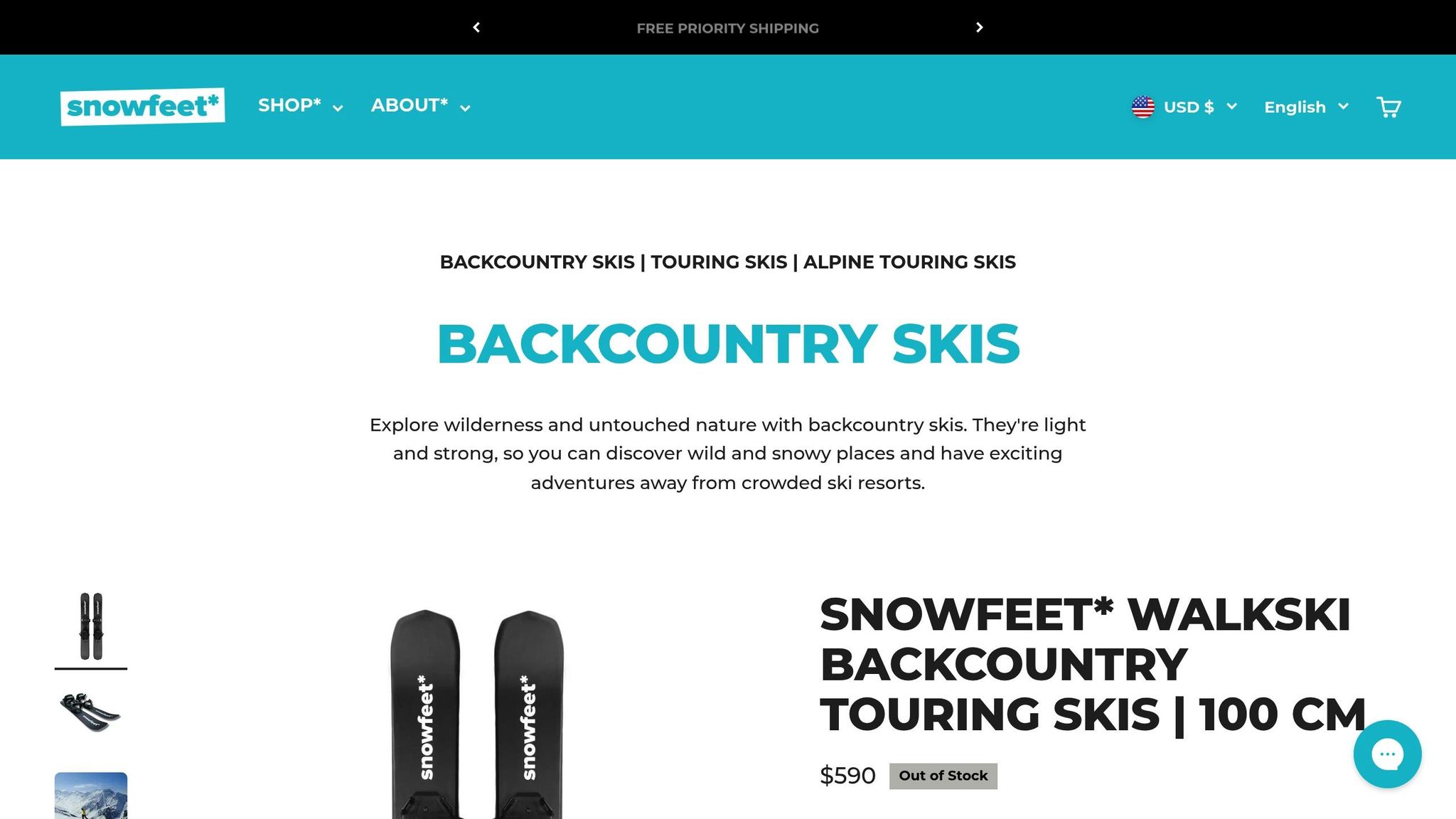
Snowfeet* WALKSKI Backcountry Touring Skisは100cmの長さで、バックカントリーの冒険に最適なバランスを実現しています。多様な地形に対応できる十分な長さがありながら、グループの機敏さと連携を保つのに十分短いです。
パウダーの中を滑走したり、氷結した区間を進んだり、岩場を越えたりするときでも、WALKSKIは装備の頻繁な交換なしにグループの動きをスムーズに保ちます。100cmの長さは安定性と操作性のバランスを提供し、誰もが安全なルート選択に貢献しやすくなっています。さらに、デザインによって促される直立姿勢は視界を良くし、より迅速で明確なコミュニケーションを可能にします。そして、これらのスキーは軽量なので疲労を軽減し、全員が鋭敏で注意深くいられます。
通常の冬用ブーツに対応
従来のスキーが専用ブーツを必要とするのに対し、Snowfeet* 製品は通常の冬用ブーツやスノーボードブーツに対応しています。これによりギアの選択が簡単になり、旅行の計画もずっと楽になります。
しかし、これは単なる利便性の問題ではなく、安全の問題でもあります。快適なブーツは水ぶくれや不快感を減らし、グループのペースを落としません。そして、全員が同じタイプのブーツを使えるため、必要に応じて装備の共有も簡単です。この柔軟性がグループの一体感を保ち、どんな状況にも対応できる準備を助けます。
バックカントリーの安全のためのツールとプロトコル
適切なギアと準備が、安全なバックカントリーアドベンチャーと危険な状況の分かれ目になります。自然は手を抜かないので、しっかりとした安全計画と適切な道具を持つことは、遠隔地に向かうどんなグループにとっても必須です。
バックカントリーコミュニケーションに必須のギア
バックカントリーでのコミュニケーションには、ラジオ、雪崩安全装備、ホイッスル、視覚信号、そしてGPSシステムが必須です。
- トランシーバー:荒野では携帯電話のサービスが不安定なことが多いため、トランシーバーの方が適しています。開けた場所で少なくとも2マイルの通信範囲があるモデルを選びましょう。ただし、山や木などの障害物で範囲は狭まることがあります。FRS(ファミリーラジオサービス)トランシーバーは、免許不要でほとんどのグループに適した選択肢です。明確なチャンネルを設定し、予備バッテリーを持参することを忘れないでください。
- 雪崩安全装備:雪崩の危険がある地域に入る場合、グループの全員がビーコン、プローブ、シャベルを携帯すべきです。旅行前にチームでこれらの装備の使い方を練習しましょう。プレッシャー下での操作方法を知っていることは、装備を持っていることと同じくらい重要です。
- ホイッスルと視覚信号:これらの軽量ツールは、ラジオが使えなくなったりバッテリーが切れた時の命綱です。3回の鋭いホイッスルの吹鳴は危険信号を示し、鮮やかな色のバンダナや緊急用ミラーは遠距離での合図に役立ちます。
- GPSデバイスと地図:ルートを外さないことが重要です。スマートフォンにもGPSはありますが、寒冷地ではバッテリーがすぐに消耗します。予備バッテリー付きの専用GPSユニットの方が信頼性が高く、紙の地図とコンパスを携帯することでさらに安全性が増します。
Snowfeet* ギアは、特に近くで移動する際のグループコミュニケーションもサポートします。通信手段が整ったら、次は緊急時のプロトコルに集中しましょう。
出発前の緊急計画の設定
準備は適切なギアのパッキングだけで終わりません。緊急時の計画を立てることも同じくらい重要で、万が一の際に全員が何をすべきかを知ることができます。
- ルート計画:旅に同行しない人に詳細な行程を共有しましょう。チェックインを逃した場合、その人が助けを呼ぶことができます。
- 引き返す時間:目標に到達していなくても、戻り始める具体的な時間を決めましょう。天候、グループの疲労、装備の問題などで早めの帰還が必要になることがあり、計画を守ることで不要なリスクを避けられます。
- 集合場所:トレイルの分岐点や特徴的な岩など、誰かがはぐれた場合にグループが再集合できる明確な目印を決めましょう。
- 天候監視:計画変更の明確な基準を設定しましょう。例えば、風速が25mphに達したり視界が100フィート以下になったら撤退するなどです。事前にこれらの閾値を決めておくことで、リスクの高い直前の判断を減らせます。
- 緊急連絡手順:誰が助けを呼ぶ責任者か、どの情報を伝えるか、救助を求める合図の方法を全員が知っていることを確認しましょう。これらの手順を練習することで、危機時に全員が迅速に行動できるようになります。
より良いグループ冒険のためのSnowfeet*アクセサリー
Snowfeet*製品は、旅にさらなる利便性と安全性を加えます。WALKSKIツーリングスキーだけでなく、グループのスムーズな移動を支えるアクセサリーも提供しています。
- 修理工具と交換用ストラップ:これらの手頃なアイテムは、現地でギアの問題を修理して遅延を防ぎ、全員が計画通りに進むのを助けます。
- 冬用衣料:信頼できて快適な装備は全員を暖かく保ち、グループが効率的に動き、安全に集中できるようにします。
- ワックスとメンテナンス用品:適切にメンテナンスされたギアは性能が向上し、複数日にわたる旅での事故の可能性を減らします。
- 携帯性に優れたデザイン:Snowfeet*のギアは、従来のスキーのようにかさばるバッグやルーフラックを必要とせず、普通のバックパックに収まります。この携帯性により、ハイキングとスキーの切り替えが容易になり、グループの一体感を保ちます。
Snowfeet*製品は、グループ内の異なるスキルレベルのギャップを埋める手助けもします。従来のスキーは時に上級者と初心者を分けてしまいますが、Snowfeet*のギアは経験に関係なく、全員が動き続け効果的にコミュニケーションできるよう設計されています。
結論:良いコミュニケーションと適切なギアが命を救う
バックカントリーの冒険には、綿密な計画と確かなコミュニケーションが求められます。自然の中では、小さなミスでも危険な状況に発展することがあります。だからこそ、グループメンバー間の明確な連携と信頼できる安全対策が、成功する旅には欠かせません。強いコミュニケーションが適切なギアの使用の基盤を築き、全員の安全を守ります。
出発前に役割を割り当て、緊急時のプロトコルを確立して信頼できる安全網を作りましょう。トランシーバーや雪崩装備のようなツールは難しい地形で重要ですが、視覚信号やホイッスルの重要性も見落とさないでください。これらの低技術な手段は、技術が故障したときにギャップを埋め、チームの連携と準備を保ちます。
Snowfeet*の装備は、従来のスキー装備よりもグループが一緒に効果的に動くための安全性をさらに高めます。従来のスキーは速度や技術の差を生みやすいですが、38cmミニスキースケートや100cm WALKSKIバックカントリーツーリングスキーのようなSnowfeet*製品は通常の冬用ブーツで使えます。これにより、グループを分断しがちな急な習得曲線がなくなります。全員が似たペースで地形を進めると、コミュニケーションがよりスムーズで一貫したものになります。
Snowfeet*の装備の携帯性もグループの連携を強化します。従来のスキーはかさばるキャリアが必要で、ハイキングとスキーの切り替えが面倒ですが、Snowfeet*の製品は標準的なバックパックに簡単に収まり、地形が変わってもグループが一緒に行動しやすくなります。
緊急時には、このチームワークがさらに重要になります。Snowfeet*の装備は、避難や急な天候変化の際に連携した動きを可能にします。また、装備が習得しやすいため、経験の浅いメンバーでも時間が限られた状況で効果的に貢献できます。
もちろん、どんな装備やコミュニケーションツールも、良識と十分な準備に代わるものではありません。明確な引き返し時間を設定し、ルート上の集合地点を決め、危機に陥る前にチームで安全装備の使い方を練習しましょう。これらの基本に加え、連帯感を促す装備があれば、安全の余裕が生まれ、成功する旅と危険な旅の差が生まれます。
バックカントリーには常にリスクが伴いますが、強力なコミュニケーションと適切な装備が大きな違いを生みます。グループ全員が同じ認識を持ち、Snowfeet*のような連携を促進するツールを装備していると、安全で成功した冒険の可能性が大幅に高まります。
よくある質問
なぜバックカントリーの冒険中に効果的なコミュニケーションが安全のために不可欠なのでしょうか?
バックカントリーで安全を保つために最も重要なツールの一つが効果的なコミュニケーションです。「ドロップイン」や「オールクリア」のようなシンプルで明確なフレーズは、グループ全員が同じ認識を持つのに役立ちます。皆が互いの行動や位置を把握していると、雪崩を誘発したり他の危険に遭遇する可能性が大幅に減少します。適切な間隔を保ち、同期して動き、無線で地形やリスクの情報を共有することで、危険を最小限に抑える確かな作戦が立てられます。
良いコミュニケーションは、不安定な雪質や突然の天候変化などの予期せぬ変化にグループが迅速に対応するのにも役立ちます。つながりを保ち協力することで、より賢明で安全な判断が可能になります。そして、難しい地形のナビゲートを楽にするギアを探しているなら、Snowfeet* の軽量WALKSKIバックカントリーツーリングスキー(100 cm)のようなツールが、必要な機動性と柔軟性を提供しつつ、チームとの密な連携を保つのに役立ちます。
バックカントリースキーの旅に出る前にどんな役割や計画を立てるべきですか?
バックカントリースキーの冒険に出かける前に、グループ内で役割を割り当てることが非常に重要です。ルートプランナー、安全責任者、通信コーディネーターのような役割を考えてみてください。これにより、全員が同じ認識を持ち、難しい状況をよりスムーズに対処できます。
時間をかけて詳細な計画を立てましょう。これには、安全なルートの選択、天候条件や雪崩リスクの確認、明確な集合場所と時間帯の設定が含まれます。トランシーバーや衛星機器などの信頼できる通信機器も忘れずに—これらはオフグリッド時に連絡を取り合うために必須です。しっかりした事前計画はリスクを減らすだけでなく、チームワークを強化し、全体の体験をより安全で楽しいものにします。
Snowfeet* 製品は、従来のスキーやスノーボードと比べて、バックカントリーの冒険中にグループの安全性とコミュニケーションをどのように向上させますか?
Snowfeet* ギアは、特にグループのためにバックカントリーの冒険をよりスムーズで安全にすることを目的としています。コンパクトなサイズと軽量設計のおかげで、予測不可能な地形を移動するのが簡単で、素早く調整できます。かさばる装備や複雑なセットアップが必要な従来のスキーやスノーボードとは異なり、Snowfeet* は通常の冬用ブーツで使えるため、誰にとってもシンプルで手間いらずです。
彼らの短い長さは、特に低速時により良いコントロールと安定性を提供します。この追加のコントロールにより、グループは環境の突然の変化により簡単に対応でき、全員が一緒に行動し明確にコミュニケーションを取るのに役立ちます。さらに、その頑丈な作りと携帯性により、厳しいバックカントリーの条件を移動する際のリスクが減り、より安全で効率的な冒険を促進します。







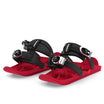
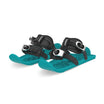












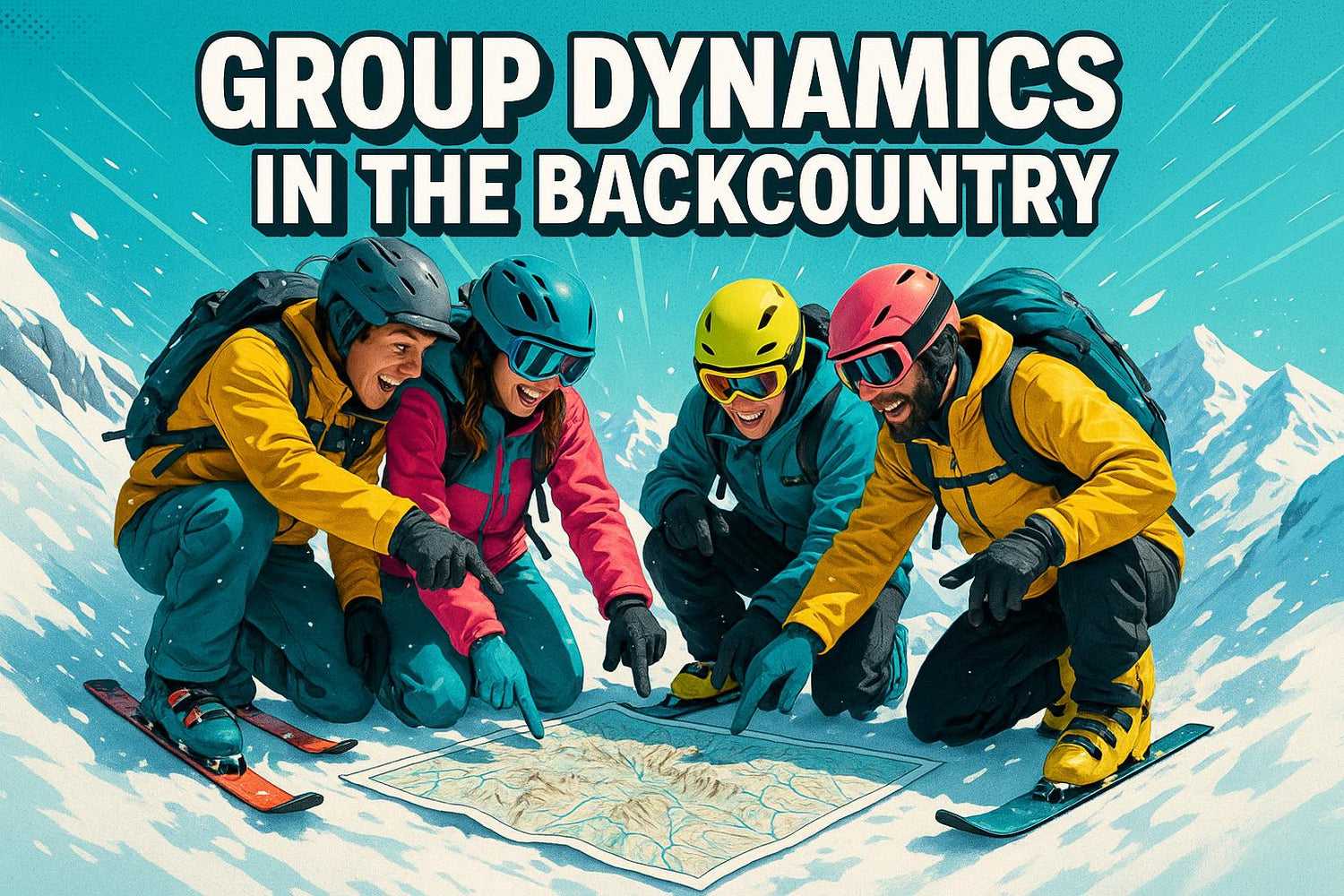
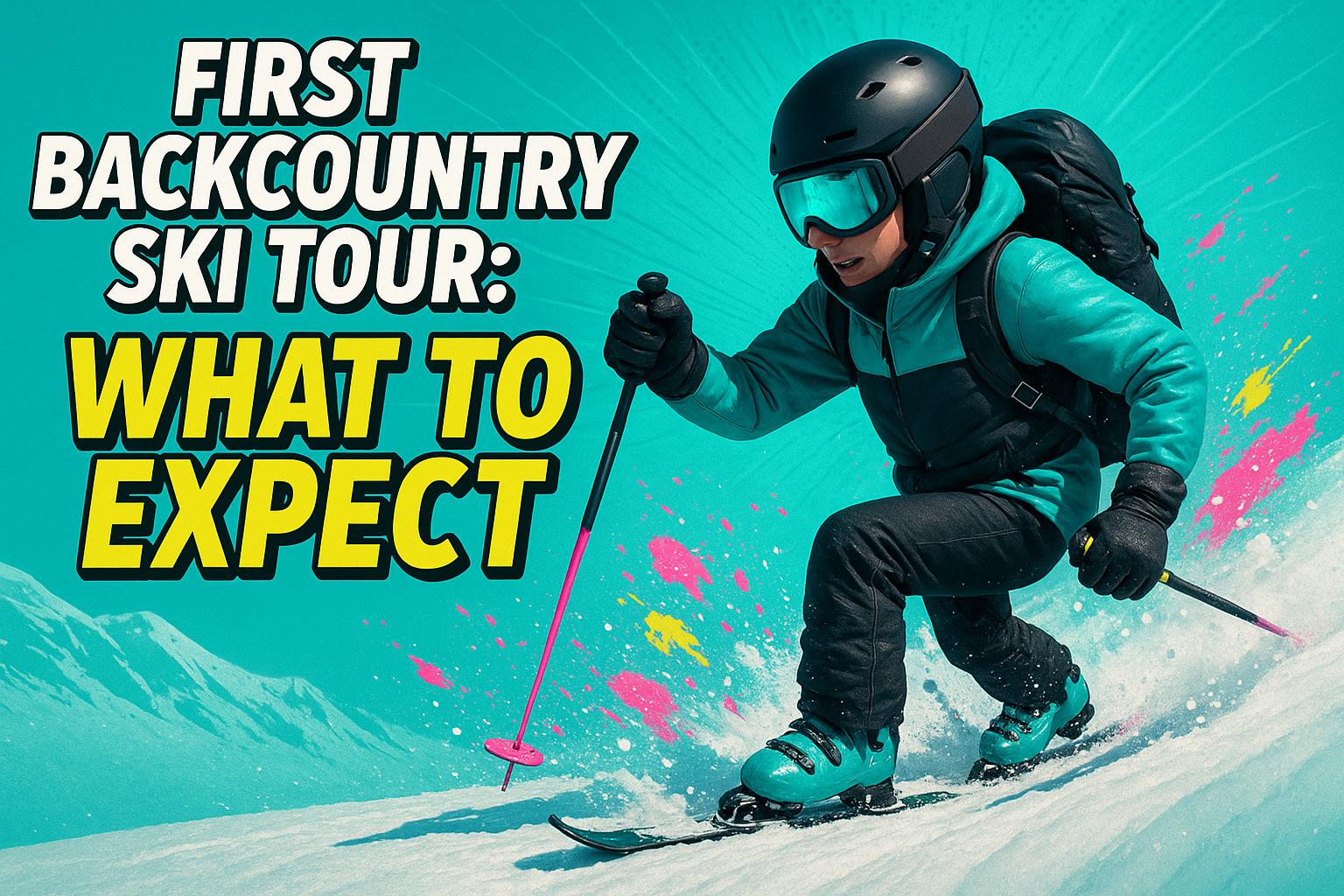





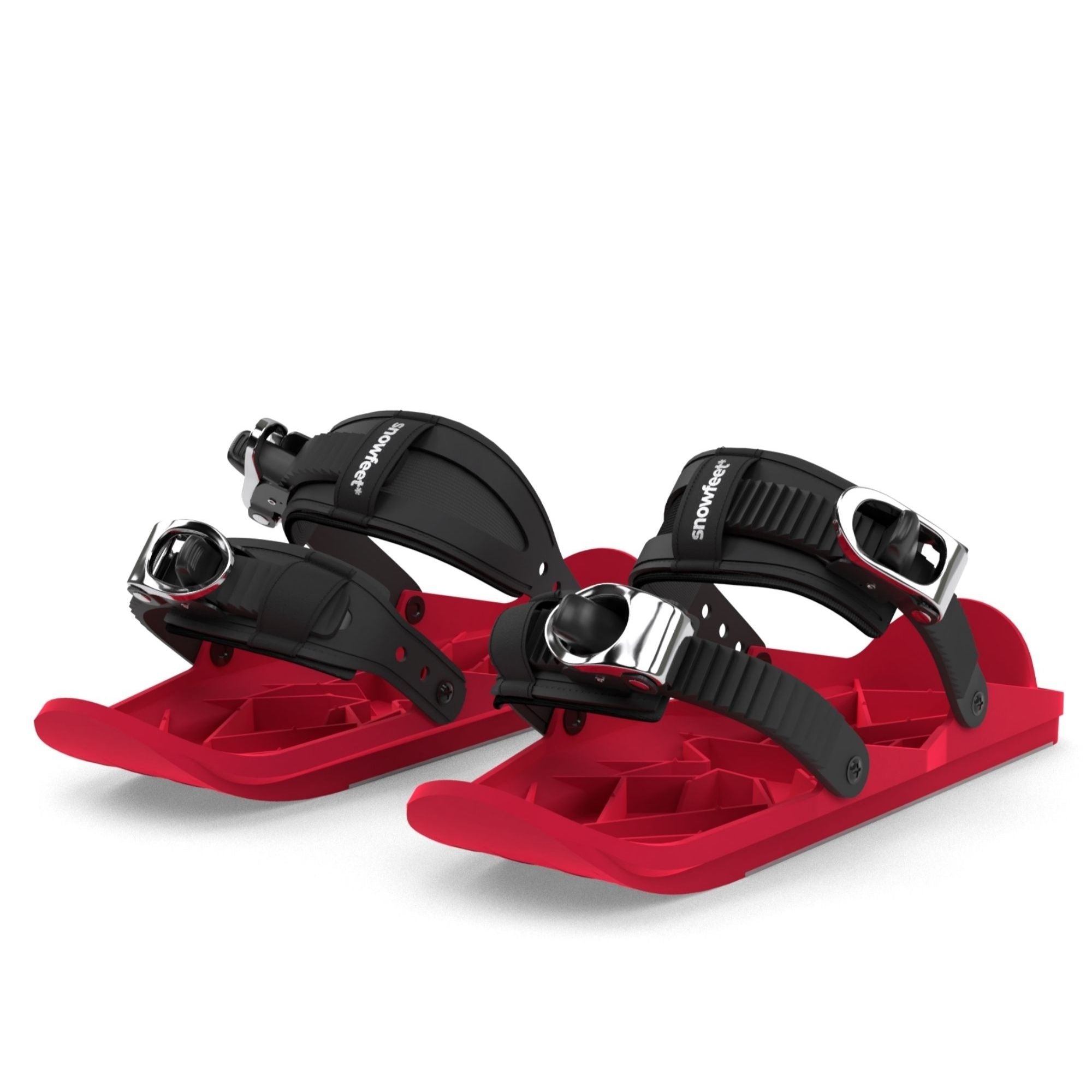
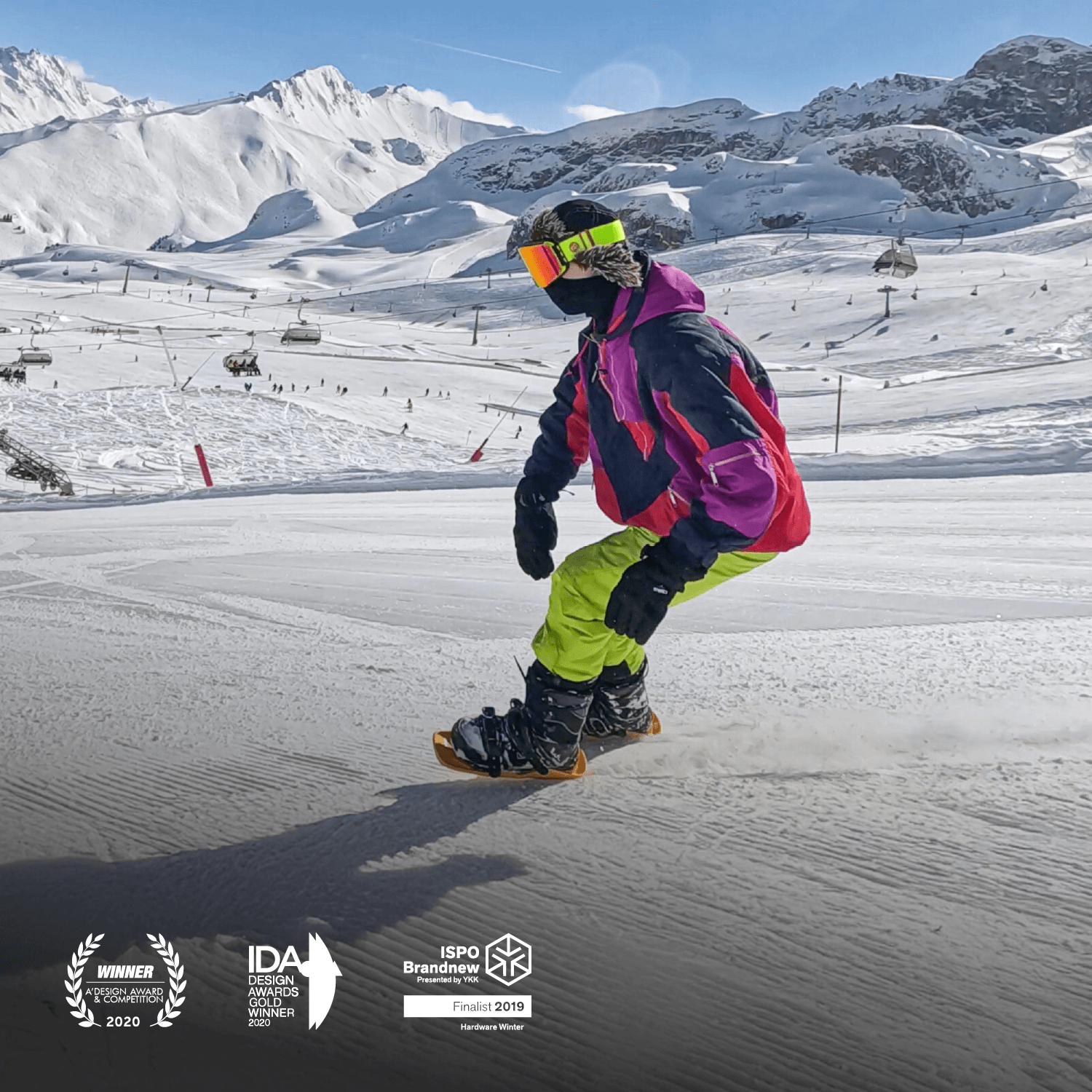




コメントを残す
このサイトはhCaptchaによって保護されており、hCaptchaプライバシーポリシーおよび利用規約が適用されます。